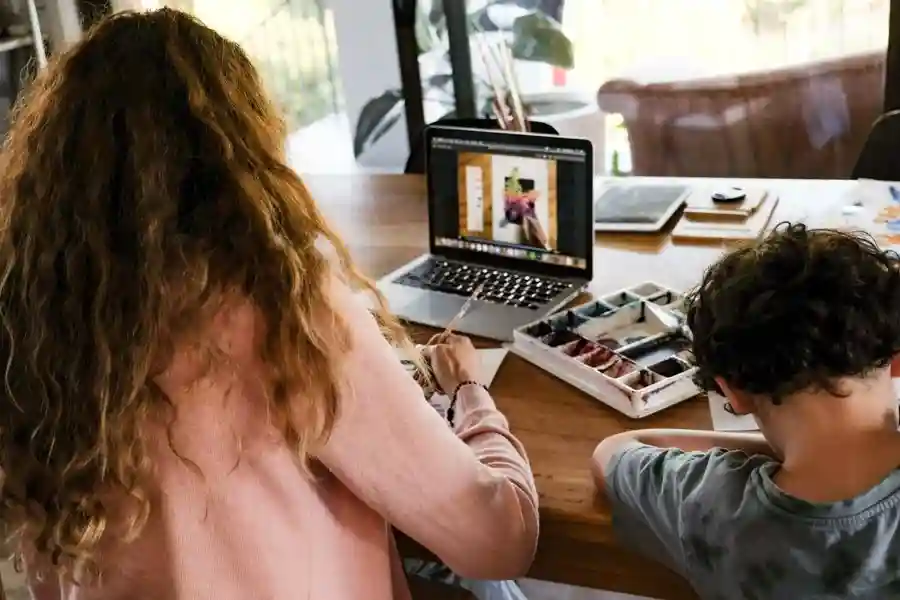Art has always been a powerful form of expression. But traditional art education isn’t always accessible. That’s where online drawing schools come in. These platforms offer flexible and affordable ways to learn, bringing top-notch instruction right to your fingertips. In this article, we’ll explore everything about online drawing schools, from their benefits to how they work. Let’s dive in.
Benefits of an Online Drawing School
Online drawing schools provide unmatched flexibility. You can learn at your own pace, fitting classes into your busy schedule. Plus, they connect you with expert instructors worldwide. Many platforms are cost-effective, making high-quality education accessible to everyone.
How Online Drawing Schools Work
Most online drawing schools require simple steps to get started:
Enroll in a Course: Sign up for classes that suit your skill level.
Choose Your Learning Style: Whether live classes or pre-recorded lessons, there’s something for everyone.
Access Lessons: Use video tutorials, assignments, and interactive tools to master techniques.
Who Can Join an Online Drawing School?
An online drawing school is for everyone. Whether you’re a beginner trying to explore art, a professional seeking to refine your skills, or a student pursuing art as a career, there’s a course for you.
1. Beginners: If you’ve always wanted to learn drawing but didn’t know where to start, these schools are perfect. They provide step-by-step guidance tailored for newcomers.
2. Professionals: Artists looking to expand their skill set can benefit too. Courses on advanced techniques, such as digital illustration or hyper-realistic drawing, help take your craft to the next level.
3. Students: Aspiring artists who dream of turning their passion into a career can use these schools to build a strong foundation. They’ll gain skills needed for careers in animation, graphic design, or fine arts.
The beauty of online drawing schools is their inclusivity. Regardless of age or experience, anyone can participate and grow.
Popular Courses in Online Drawing Schools
Online drawing schools offer a wide variety of courses. Here are some of the most popular options:
1. Basic Drawing Techniques: These courses focus on fundamentals like shading, perspective, and proportions.
2. Advanced Portrait Drawing: Perfect for those interested in capturing the human form, these classes dive deep into anatomy and facial expressions.
3. Digital Illustration: With the rise of digital art, courses teaching software like Photoshop and Procreate are in high demand.
4. Specialized Art Forms: You can also explore niche areas like manga, caricatures, or architectural sketching.
Each course is designed to cater to different interests and skill levels, ensuring there’s something for everyone.
Tools and Materials Needed for Online Drawing Classes
To succeed in an online drawing school, you’ll need the right tools. Here’s what’s typically required:
- Traditional Art Supplies: Pencils, erasers, sketch pads, and markers are essential for foundational classes.
- Digital Drawing Tools: A tablet or stylus can be useful for digital art courses. Popular choices include the iPad with Apple Pencil or Wacom tablets.
- Recommended Software: Programs like Adobe Illustrator, Clip Studio Paint, or CorelDRAW are often recommended for digital drawing.
- Reliable Devices: A laptop, desktop, or tablet with a stable internet connection ensures smooth learning.
Investing in these tools enhances the learning experience and allows you to practice effectively.
Top Online Drawing Schools Worldwide
Here are some renowned online drawing schools that have transformed aspiring artists into professionals:
1. Skillshare: Known for its diverse range of art classes, Skillshare offers lessons by experienced professionals.
2. Domestika: This platform features courses taught by some of the best artists globally.
3. Proko: Ideal for anyone interested in figure drawing and anatomy.
4.Udemy: Offers affordable courses for beginners and professionals alike.
Each school has its unique features, making it essential to choose one that aligns with your goals.
How to Choose the Best Online Drawing School for You
Selecting the right online drawing school can feel overwhelming. Here are some tips to simplify the process:
1. Define Your Goals: Are you a hobbyist or a professional aiming for mastery? Choose a course based on your needs.
2. Budget Considerations: Compare costs and look for platforms offering free trials or discounts.
3. Read Reviews and Testimonials: Feedback from past students can provide valuable insights.
Finding the right fit ensures you get the most out of your learning experience.
Challenges of Learning in an Online Drawing School
While online drawing schools offer many benefits, challenges do exist:
1. Staying Motivated: Without a physical classroom, staying disciplined can be tough.
2. Managing Distractions: Learning from home often comes with interruptions.
3. Overcoming Technical Issues: From internet outages to software glitches, tech problems can disrupt lessons.
To overcome these challenges, set a routine, create a dedicated workspace, and ensure you have reliable tech support.
Tips for Success in Online Drawing Schools
Want to excel in your online drawing classes? Here are some practical tips:
Set a Schedule: Dedicate specific hours each week to learning and practicing.
Join Communities: Many platforms have forums or social media groups where students share tips and feedback.
Practice Regularly: The more you practice, the faster you improve.
Consistency and engagement are key to mastering drawing skills.
The Role of Technology in Online Art Education
Technology has revolutionized art education. Tools like virtual classrooms and AI-powered feedback systems make learning more interactive. Digital platforms now offer features like real-time collaboration and augmented reality, enhancing the experience for students.
The future holds even more possibilities, with VR-based art classes and advanced AI tools becoming mainstream.
Online Drawing School vs. Traditional Art Classes
Both online and traditional art classes have unique advantages. Here’s a comparison:
1. Online Classes: Offer flexibility, affordability, and global access. Perfect for self-motivated learners.
2. Traditional Classes: Provide hands-on guidance and a sense of community. Best for those who thrive in structured settings.
Combining both approaches can offer the best of both worlds, helping you grow as an artist.
Conclusion
Online drawing schools have made art education accessible to everyone. Whether you’re a beginner or a professional, there’s a course tailored to your needs. With the right tools, dedication, and guidance, you can unlock your creative potential. Start your artistic journey today by enrolling in an online drawing school. The only limit is your imagination!






